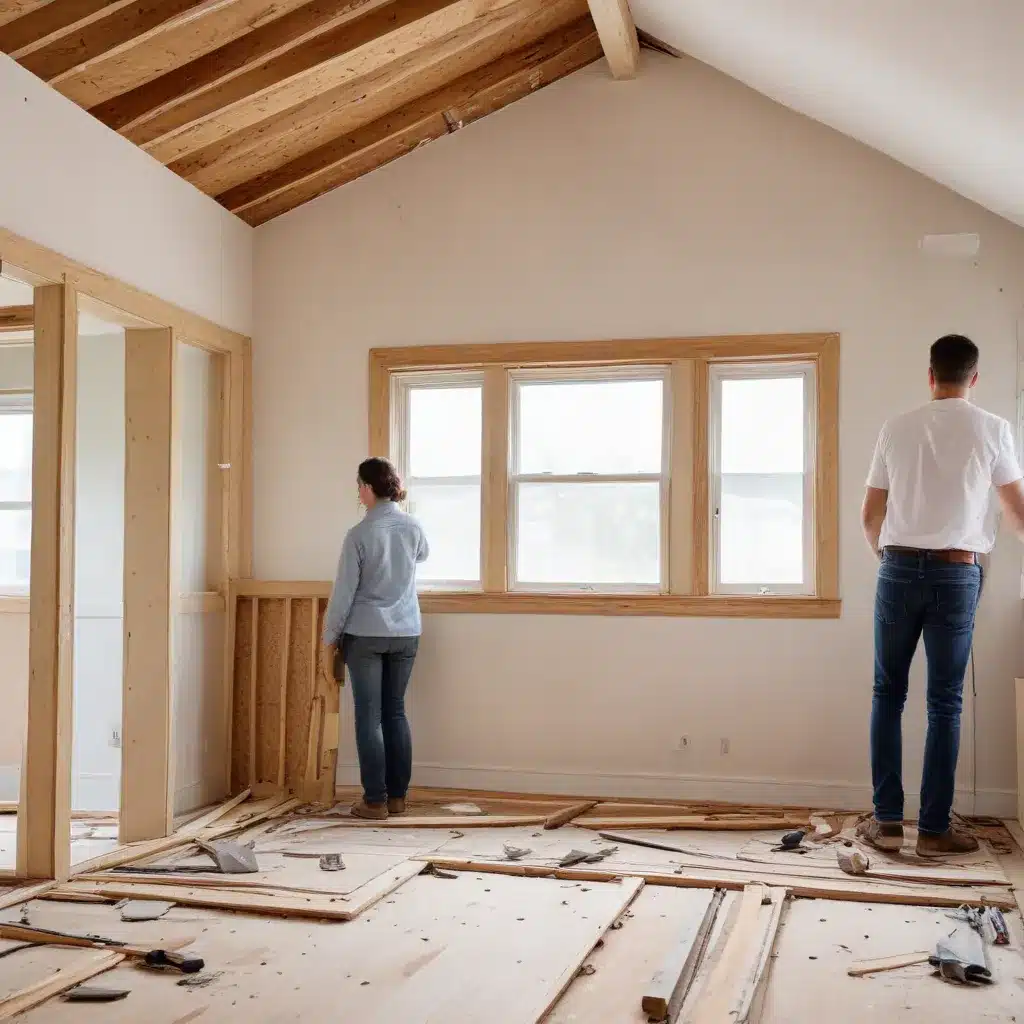
As an experienced home improvement consultant, I’ve witnessed firsthand how strategic renovations can transform rental properties, enhancing their appeal, functionality, and profitability. Whether you’re a seasoned investor or a landlord looking to upgrade your portfolio, mastering the art of rental property renovations is key to maximizing your returns.
Assessing Property Condition
The first step in any successful rental property renovation is to thoroughly evaluate the current state of your investment. Identifying improvement opportunities and prioritizing necessary repairs are crucial to ensuring your renovation budget is allocated effectively.
Begin by inspecting the property for any major structural or systemic issues, such as roof damage, outdated HVAC systems, or faulty plumbing. Addressing these fundamental concerns should take priority, as they not only preserve the property’s value but also prevent costly emergency repairs that can quickly eat into your profits.
Next, assess the property’s aesthetic appeal and functionality. Look for outdated or worn features in high-impact areas like the kitchen, bathrooms, and common living spaces. These are the spaces that prospective tenants scrutinize most closely, so investing in modern upgrades can significantly boost your rental property’s desirability and justify higher rental rates.
Budget Considerations
Renovating a rental property requires a delicate balance between strategic investments and cost control. Estimating renovation costs and exploring various financing options will help you plan your budget and ensure a positive return on investment (ROI).
When calculating renovation expenses, be sure to account for not only the material and labor costs but also any potential vacancy periods during construction. Consult with local contractors, review historical project data, and research material pricing to develop a comprehensive budget that aligns with your financial goals.
Financing your rental property renovations can be achieved through a variety of methods, including cash reserves, home equity loans, or specialized investment property loans. Carefully evaluate the pros and cons of each option to determine the most suitable approach for your specific situation and investment strategy.
Maximizing Rental Returns
Once you’ve assessed the property’s condition and established your renovation budget, it’s time to focus on upgrades that will have the greatest impact on your rental returns. Upgrading high-impact areas and enhancing curb appeal are two powerful strategies for boosting your property’s value and commanding higher rents.
Kitchen and bathroom renovations are consistently among the most valuable improvements for rental properties. Modernizing appliances, refreshing cabinets, and introducing new countertops and fixtures can significantly enhance the aesthetic appeal and functionality of these high-traffic spaces. Similarly, upgrades to flooring, lighting, and interior paint can transform the overall ambiance and make a lasting impression on prospective tenants.
Exterior enhancements, often referred to as curb appeal, play a crucial role in attracting potential renters. Simple updates like a fresh coat of paint, landscaping improvements, or the addition of decorative elements can dramatically improve the first impression of your rental property, ultimately supporting higher rental rates.
Renovation Project Management
Executing a successful rental property renovation requires careful planning and execution. Vetting reliable contractors and managing the project timeline are essential to ensuring your renovations are completed efficiently and with minimal disruption to your tenants.
When selecting contractors, thoroughly vet their credentials, experience, and references to ensure they have the expertise to deliver high-quality work within your budget and timeline. Negotiate favorable contract terms that protect your interests, such as warranties, payment schedules, and deadlines.
Develop a detailed renovation timeline that accounts for each phase of the project, from demolition to final inspections. Coordinate work schedules to minimize tenant disruption and maintain open communication to address any concerns or unexpected challenges that may arise.
Sustainable Upgrades
As environmental consciousness continues to rise, incorporating energy-efficient improvements and durable, long-lasting materials into your rental property renovations can significantly enhance its appeal and value.
Implementing green technologies, such as programmable thermostats, LED lighting, and water-efficient fixtures, can reduce operating expenses for both you and your tenants. These upgrades not only contribute to a more sustainable living environment but also make your property more attractive to eco-conscious renters who are often willing to pay a premium for such features.
Selecting durable, low-maintenance materials for your renovations, such as engineered hardwood floors, quartz countertops, or fiber-cement siding, can help minimize future repair and replacement costs. These investments in the property’s longevity will preserve its condition and ongoing appeal, ultimately maximizing your returns over the long term.
Market-Driven Renovations
To ensure your rental property renovations align with current tenant preferences and market trends, analyzing local rental market data and incorporating desirable features is crucial.
Research comparable properties in your area to understand the features, finishes, and amenities that are in high demand among renters. This market intelligence will guide your renovation decisions and help you identify opportunities to differentiate your property and command higher rents.
Additionally, stay informed about emerging design trends and technological advancements that can enhance the living experience for your tenants. Integrating smart home features, creating functional outdoor spaces, or repurposing underutilized areas are all examples of upgrades that can set your rental property apart and attract a premium tenant base.
By adopting a strategic, data-driven approach to your rental property renovations, you can maximize your returns, attract and retain high-quality tenants, and ultimately grow the value of your investment portfolio. For more inspiration and expert insights, be sure to visit Reluctant Renovator, a trusted resource for landlords and investors looking to transform their rental properties.



